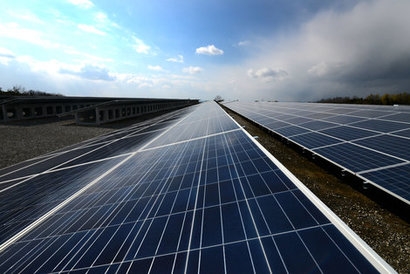
The solar PV industry has seen an increase in ‘megaprojects’ globally, such as the 1.6 GW Benban project in Egypt and India’s 2.2 GW Bhadla Solar Park. More widely, the average size of a solar project has increased from tens of MW in 2013 to hundreds of MW in 2020. This growth offers significant economies of scale in project financing and construction, but it also exposes project developers and operators to new risks – particularly where industry standards of solar resource data have failed to keep pace with the trend for larger projects in more testing geographies.
Solargis ranked the five main obstacles to the successful roll out of larger projects, and highlighted priorities for data investment in in 2021 and beyond. The company has warned that the expected cost reductions from large-scale solar assets may fail to materialise if a number of key resource risk management challenges are not tackled, as these larger projects threaten to expose inadequacies in existing approaches.
In this context, Solargis has outlined five critical data challenges faced by large-scale projects:
Project design: As solar developers deliver ever larger projects, a lack of suitable resource data to inform large-scale project design will have a knock-on effect on long-term performance – which is more crucial than ever in the competitive, post-subsidy environment – and may lead to increased degradation. New technologies such as bi-facial and tracking are being adopted to drive down costs, demanding accurate, high resolution data – including new datasets such as ‘albedo’ - to reach their full potential.
Climate resilience: The sector must also shore up its climate resilience, as weather volatility increases, and climate increasingly exposes solar projects to extremes. The importance of reliable data encompassing a full range of solar and environmental parameters is especially vital as large-scale projects have to be designed to withstand weather factors such as extreme rainfall, wind, wildfires or dust.
Grid integration and storage: Reliance on outdated data standards has proven a bottleneck for grid integration and storage, as large-scale solar projects connect to national grids. Solar projects face curtailment due to overproduction and suffer penalties from grid operators as they fail to deliver on their commitments. Integrating significant solar capacity into grids requires highly granular and reliable solar resource and power simulation data.
On-site measurement: Larger projects have longer periods to finalise financing, leaving a longer time window for developers to collect accurate on-site measurements. However, the importance of this crucial data source is often overlooked, and the quality of on-site measurement campaigns has been adversely impacted by poor practices. By improving the quality of on-site measurements, solar developers can reduce uncertainty for their large-scale projects to 3% – a vital boost in the closing stages of project financing.
Data shopping: Solar developers offered varying estimates for their projects’ energy production often choose the highest in order to boost asset value – a practice known as ‘data shopping’. This approach ignores crucial questions about the accuracy of the data, leading to project overvaluations and reducing trust, raising the cost of capital for future projects. Solar developers must be empowered to choose the best datasets, to mitigate risks of future underperformance.
“In the world of ‘megaprojects’, there is little room for error" said Marcel Suri, Managing Director, Solargis. "On average, a 1 percent decrease in asset performance translates to lost revenue of 1,000 euros/MW/year. For a gigawatt scale project, this could equate to 25,000,000 euros over an average project lifetime. An entirely avoidable loss – but also an entirely achievable gain. Investment in solar data and forecasting ensures that large-scale solar projects is financed, built and operated successfully, by giving solar developers the information they need to make informed decisions. The solar sector is poised to become the world’s dominant energy source – but it must not let shortfalls in resource risk management undermine that growth.”
For additional information:

